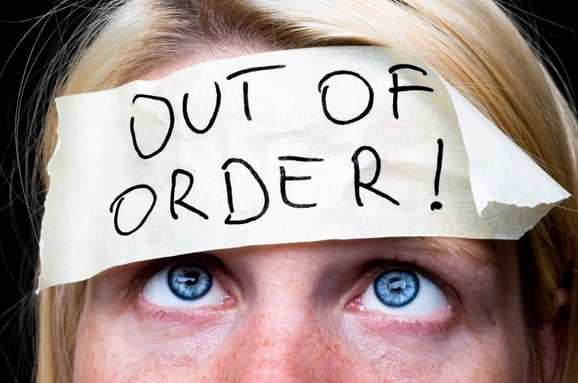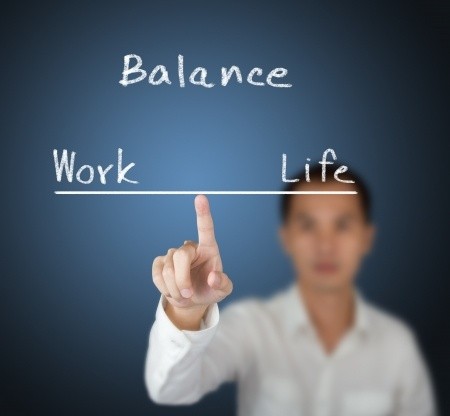
Dozens of studies have shown the connection between job stress and cardiovascular disease and heart attacks. Now an important new study has found that high job strain also increases the risk of strokes, or brain attacks, by 22%. The risk is higher in women, 33%, and for the most common type of stroke, ischemic stroke, which cuts off blood flow to the brain, job strain increases the stroke risk by 58%.
As much as we would prefer to ignore it or call it something less charged, unmanaged stress has real consequences no one can afford to turn a blind eye to, whether employee or employer. This latest evidence shows that failure to control job strain can blow up the very source of productivity itself, the brain. This is an unforced error that doesn’t make sense. There are enough competitors out there ready to slice and dice. We don’t need to be doing it from within.
Stroke is the fourth leading cause of death in the U.S., affecting 800,000 people every year. It occurs when there is an interruption of blood flow to the brain, which prevents brain cells from getting the oxygen and nutrients they need, and they can die as a result. Stokes are caused by artery blockage or narrowing, which happens in the 85% of cases that are ischematic, by blood hemorrhaging in brain arteries, or by temporary blood clots in the brain, known as transient ischemic attack (TIA). Stroke can lead to temporary or permanent disabilities and paralysis.
DEMANDS VS. CONTROL
The Chinese researchers who conducted the meta-study analyzed data from six prior studies on three continents, including one in the U.S. They looked at the effects of strain on a sizable 140,000 people. Their report measured how the subjects fared over four categories of jobs, each with varying degrees of psychological demand, or strain, and control over demands, the key factors in whether you feel you can cope with a challenge or not. Lack of control in the face of high demands flips on the danger switch in the body's ancient defense mechanism, the amygdala, and the stress response kicks into fight-or-flight mode.
The risk of stroke is least for people in low-cognitive strain jobs, such as manual labor, and highest for people whose jobs have high levels of mental load, time pressure, and management and coordination, but who have little control over their work. Even if you have high demands, if you feel you have some control over events, what's known in the stress literature as "latitude," that creates a sense of coping capacity, countering the strain. High threat-vigilant work has been shown to be the most stressful, which includes bus drivers, taxi drivers, nuclear facility workers and air traffic controllers.
High strain jobs are proliferating with the speedup in pace, inundation of email and interruptions, which slow things down and increase time pressure, and leaner operations, which increase workload and the perception you are overwhelmed. Without strategies to adjust these conditions and the perceptions they create, chronic stress can develop, and that is where the serious health and productivity blowback occurs.
BUILDING COPING CAPACITY
As has been shown in Japanese studies of karoshi (death by overwork) victims, chronic high stress leads to unhealthy lifestyle choices—eating fatty foods, smoking, drinking, and no exercise, as well as other decisions that increase stroke risk. Meanwhile, chronic stress jacks up blood pressure, lowers the immune system, increases the bad cholesterol, decreases the good cholesterol, and boosts the risk of plaque buildup in arteries, which can lead to cardiovascular disease, a proven risk factor for stroke.
As with heart issues, it's critical to know the warning signs. Symptoms of stroke include numbness of the face, arm, or leg (often on one side), vision problems, headaches, speaking and understanding problems, dizzyness, and unsteady gait.
The good news is that we don’t have to let high strain develop into stress. We can control it in our bodies and companies by making adjustments to how we work that turn high strain into manageable pressure. Our stress management training, for instance, gives individuals tools to increase their perceived control over tasks and events, which moderates strain and builds coping capacity. Simple changes to processes and operations can dramatically reduce stress triggers within the organization and increase performance along the way. There are few blocks to performance as effective as unmanaged stress, which drives absenteeism, cynicism, conflict, mistakes, crisis mentality, fatigue, and exhaustion.
BRAIN MANAGEMENT
Stress management is brain management, and brain management is productivity management. Stress constricts the brain to the perceived crisis of the moment, so it stifles planning and complex decision-making, which require a leap out of the current worry loop. Brains under chronic stress make rash decisions, since the faculties of the analytical mind get hijacked by the impulsive, emotional caveman brain.
Most of us individually try to avoid things that make us unhealthy—cigarettes, high-cholesterol foods—but when it comes to stress, we don’t act or ignore the problem. We have been programmed to believe that it’s just the way it is, or that we can take it. Smoking increases the risk of heart disease by 20%. This new study says that job strain is just as risky for stroke, and considerably higher, 33%, for women.
Companies spend heavily to recruit and train the best talent, but then can jeopardize those skilled minds by not being proactive about stress management. The latest scientific evidence shows that job strain is no longer something that can be written off as just part of the day. The activation of stress itself is a signal that something is perceived to be an emergency.
I hope these latest findings can move us closer to a time when we see this threat for what it is—the single biggest threat to the nation’s health ($1 trillion a year in costs annually, according to U.C. Irvine’s Peter Schnall), and to the effective functioning of any organization in a time of digital, 24/7 demands.
If you would like to learn more abou how to control stress in your organization or get details on our stress management programs, click the button below. Manage stress, and unleash performance.




















